“A true warkari does not think in kilometres; his ultimate destination is Pandharpur.” A mass of white-clad pilgrims — the men in dhotis, the women in nine-yard saris — is on the move even before dawn. The street lights, still aglow at that early hour, provide a dim illumination to these thousands as they trudge along the unfamiliar roads. The pilgrims are making their way to Saswad, on this, the third day of the wari. An annual event in the Marathi calendar, the wari is a pilgrimage undertaken by devotees of Lord Vithoba, to his temple in Pandharpur. Palanquins (palkhis) venerating Sant Dnyaneshwar and Tukaram are carried from Alandi and Dehu by the warkaris, who cover 250 km by foot, over a 21-day journey. The pilgrims — this year there were about three lakh of them — reach Pandharpur on the auspicious day of Ashadhi Ekadashi. [caption id=“attachment_4910281” align=“alignnone” width=“825”] 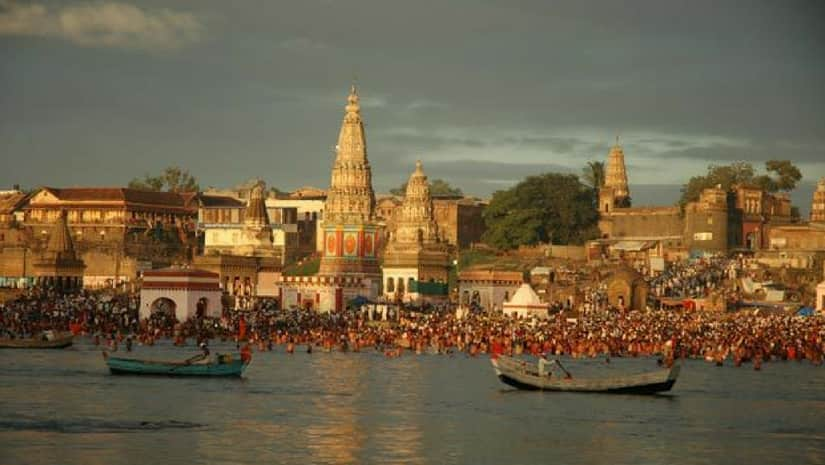 Pandharpur. Image via Facebook[/caption] On the July day that I walked along with the warkaris, Pune was where we halted. The city has a carnival-like atmosphere when the pilgrims make their yearly pit-stop here: temples resound with melodious abhangas, sung in time to the rhythm set by dholkis and cymbals; the rustic warkaris mill through Pune, dropping in at dindi (the different pilgrim groups/associations) offices to store the few possessions they carry on their three-week journey. “Punekars gather in Bhavani Peth to see the beautifully decorated chariots of the saints,” Leena Nanal, 70, who oversees the Deshmukh dindi, told me. “Previously, the warkaris would even sing bhajans, perform phugdi and work the dhwaj (flag) for onlookers,” she said. As Leela reminisced about her 30-year association with the wari, a steady stream of warkaris made their way into her office with their bags, sleeping mattresses and in some cases, pillows. Leela’s mother had considered (participating in) the wari a calling; Leela quite literally followed in her mother’s footsteps. “Emulating my mother, I undertook the 250-km walk for three decades until last year. Now, my body has compelled me to stop and this is the first year that I will be left behind,” she said. [caption id=“attachment_4910301” align=“alignnone” width=“825”] 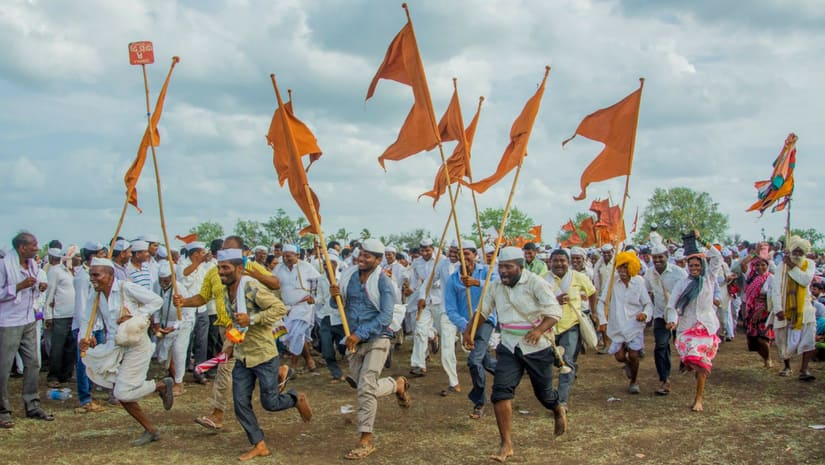 A dindi takes off. Image via Facebook[/caption] The tradition of the wari goes back at least 700-800 years, retracing the 21-day journey that Sant Dnyaneshwar seemingly took, from Alandi to Pune, Saswad and Jejuri, before culminating at Pandharpur on Ashadhi Ekadashi. (This year, the warkaris had to reach Pandharpur by 23 July, when the festival was observed.) In Pune, the warkaris halt for about two days. And on the third day, “come rain or shine, Mauli’s (as Sant Dyaneshwar is referred to) palkhi leaves at 6 am sharp from Pune,” Leela said. But thousands of warkaris leave long before 6 am to commence the most difficult stretch of the pilgrimage — the route from Pune to Saswad. *** [caption id=“attachment_4910311” align=“alignnone” width=“825”] 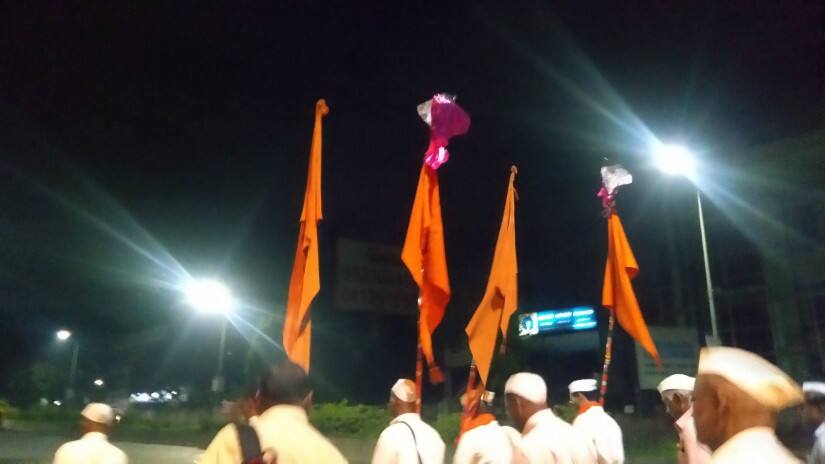 The warkaris start off at the crack of dawn. Image courtesy the writer[/caption] As I walked towards the city’s outskirts at 4.30 am, with my small satchel filled with granola bars and lime water, traversing the 33-km long path that passes through the winding Dive ghat seemed a daunting feat. But as I continued my trek, Leela’s words rang in my ears: “A true warkari does not think in kilometres, for his ultimate destination is Pandharpur.” I was also clearly overdressed for this endeavour. Most of the warkaris were carrying a shabanam alone — the white jhola that carries water, a few biscuits and a plastic sheet for sitting on or for covering themselves with when it rains. In a palkhi procession, the warkaris cannot use umbrellas: they maintain a five-row formation and an umbrella could poke a fellow pilgrim in the eye, or lead to sore arms if the downpour continues for several hours. To ward off sleep and fatigue, the warkaris perpetually sing vatchaliche abhanga (hymns for the road) composed by Saint Tukaram, even as trucks trundle past them. Every dindi is allotted two trucks — one that carries the warkaris’ luggage, and the other, all the cooking supplies and apparatus necessary for the journey. [caption id=“attachment_4910321” align=“alignnone” width=“825”] 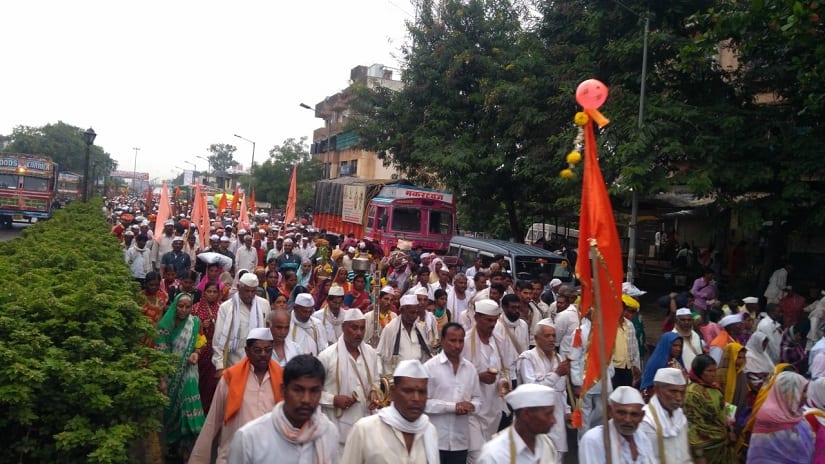 On the march. Image courtesy the writer[/caption] Vimal Lakshman Ghorpade briskly overtook one of the trucks as it slowed down. Vimal is part of Dindi One, and hails from Mhaisal, on the Karnataka border. “I cannot walk the entire stretch anymore but I still wanted to be a part of the wari. The dindi heads said to me, ‘If you cannot walk, cook. But don’t stop coming along’.” Vimal now makes around 500 rotis and bhakris for 250 pilgrims for every meal. Lalita Bedmutha, among the warkaris on the road this year, pointed out that as a Jain, the “wari is not really a family tradition”. “But coming here just feels so pleasant and positive,” she said. Then there was Nageshwar Dyanrao, who told me how seeing the film Guide at the age of 22 changed his life. “Have you seen it?” he asked. The film ‘inspired’ Dyanrao to leave his wife and son behind and lead a life constantly on the move. “I never worked a day, but met kind people who helped me along the way. Now, I have been from Kashmir to Kanyakumari. Last I heard, my wife and son were in Nashik but my life is all about travelling,” he said. [caption id=“attachment_4910341” align=“alignnone” width=“825”] 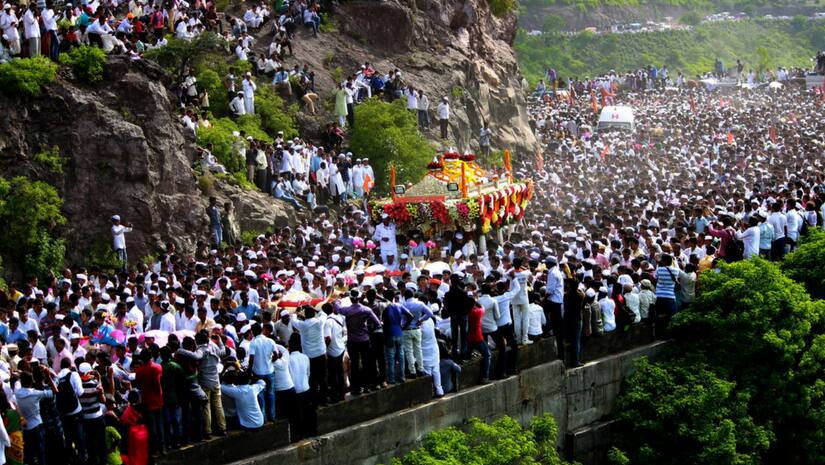 At Dive ghat. Image via Facebook.[/caption] A group of women from Pune, all first-timers, told me how there was constant encouragement from the other warkaris and bystanders to stay the course. “If we stop anywhere, some stranger just comes along and tells us ‘chala mauli’, exhorting us to continue,” they said. The wari proceeds with almost military-like discipline; there are no transgressions — if a man were to accidently brush past a woman, he would touch her feet and walk on. “This crowd is not like a Ganpati procession,” the women from Pune said. “Warkaris walk with great discipline and everything is systematic.” The warkaris are united in their faith. They greet each other with a warm ‘Ram Krishna Hari’ and have a singular name — ‘mauli’ (meaning Saint Dyaneshwar) — for all. Thus, a wari transcends the idea of a simple pilgrimage; instead, it is a vibrant entity in which thousands of minds are bent towards one destination. *** A lone grey cloud and occasional drizzles promised cooler weather as we continued our exhausting uphill walk along the zigzagging route through Dive ghat. The respite from the heat and the chants of “Jai Jai Ram Krishna Hari” were enough to drive away any fatigue. [caption id=“attachment_4910351” align=“alignnone” width=“825”] 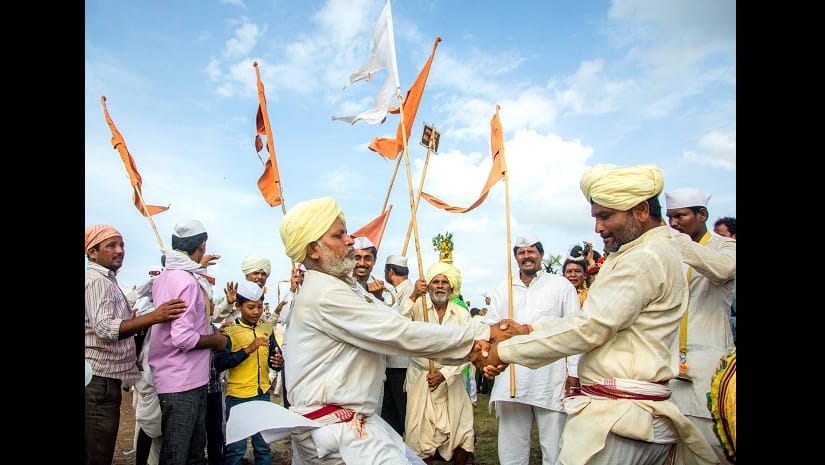 Warkaris perform phugdi. Image via Facebook[/caption] The 10-km ghat road makes for a tiring trek. The lush greenery of the hills, courtesy the monsoon showers, making for a soothing sight for the eyes, and also a nice bed for the warkaris to lounge on for a short while before resuming their long walk. Even when the warkaris stopped for a rest by the roadside, their enthusiasm bubbled through. They started up their dholkis, jhanj and chiplya and launched into spontaneous kirtans. “Tuzhe charan dekhliya, bhag gela, sheena gela, avagha ananda zhala (Touching your feet dissolves all pain, leaving only bliss),” they sang. At Dive ghat, a festive gathering awaited the warkaris. The men and women danced to bhajans about the feats of Vithoba and the faith of Dyaneshwar. The air thrummed with energy and devotion. Walking the wari is not just about devotion. It is about faith in oneself, that one will complete a feat that challenges both mind and body. As I crossed the last four kilometres of the Pune-Saswad lap and made my way to the bus stand, I could see the warkaris dispersing in the town; their lilting melodies and tinkling chiplyas stayed with me long after the procession moved on.
An annual event in the Marathi calendar, the wari is a pilgrimage undertaken by devotees of Lord Vithoba, to his temple in Pandharpur. Palanquins (palkhis) venerating Sant Dnyaneshwar and Tukaram are carried from Alandi and Dehu by the warkaris, who cover 250 km by foot, over a 21-day journey
Advertisement
End of Article


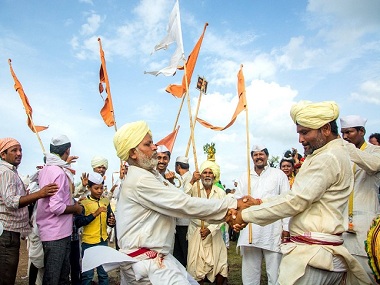)
)
)
)
)
)
)
)
)



